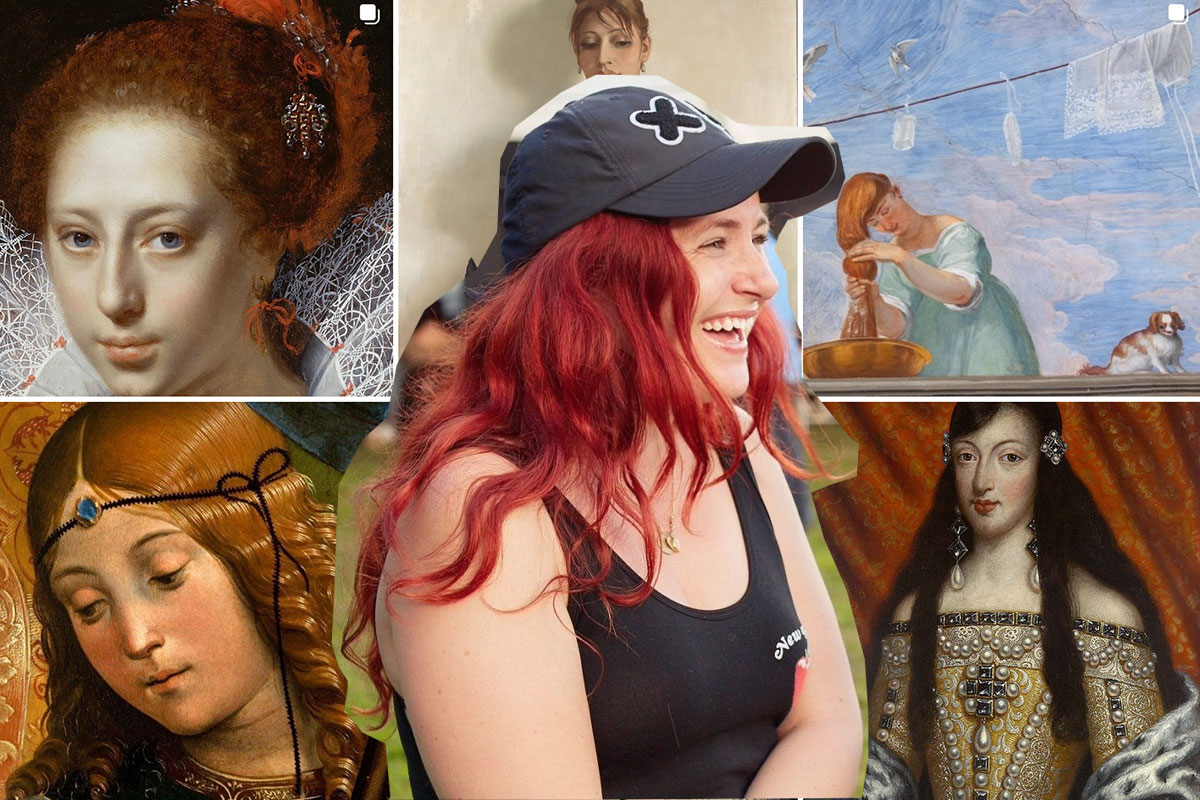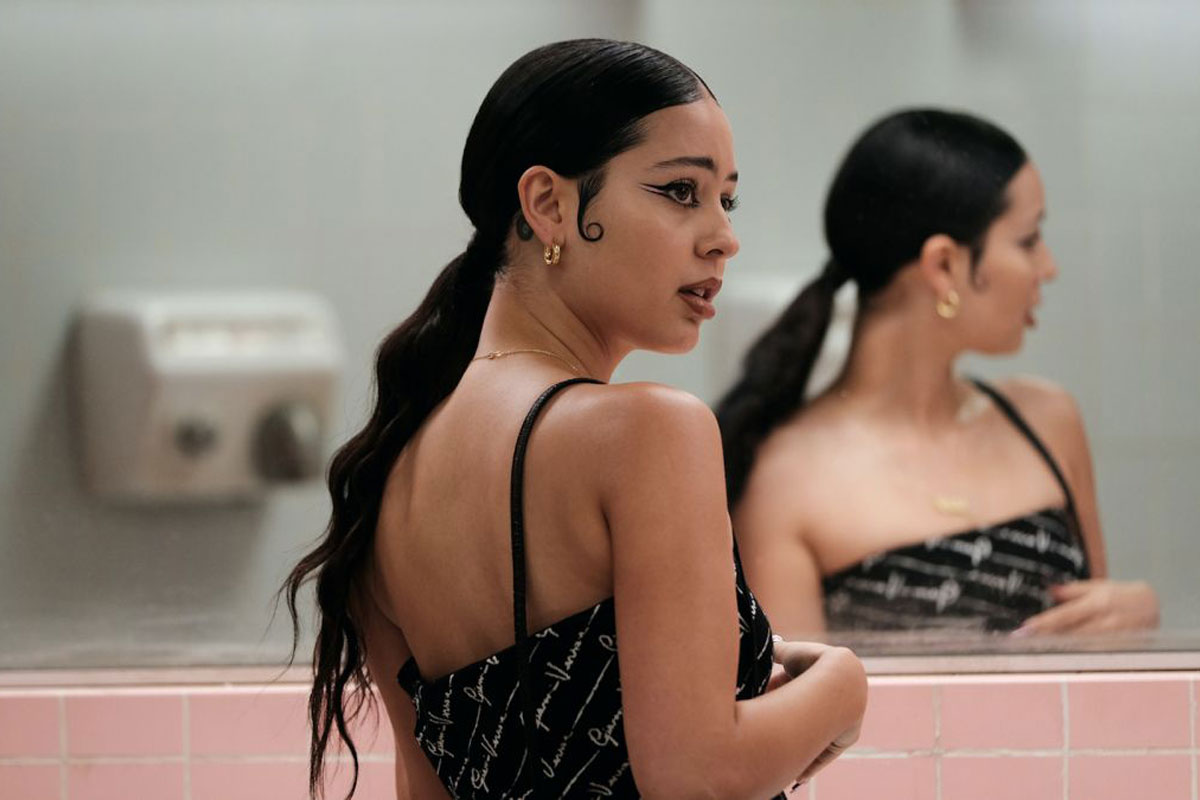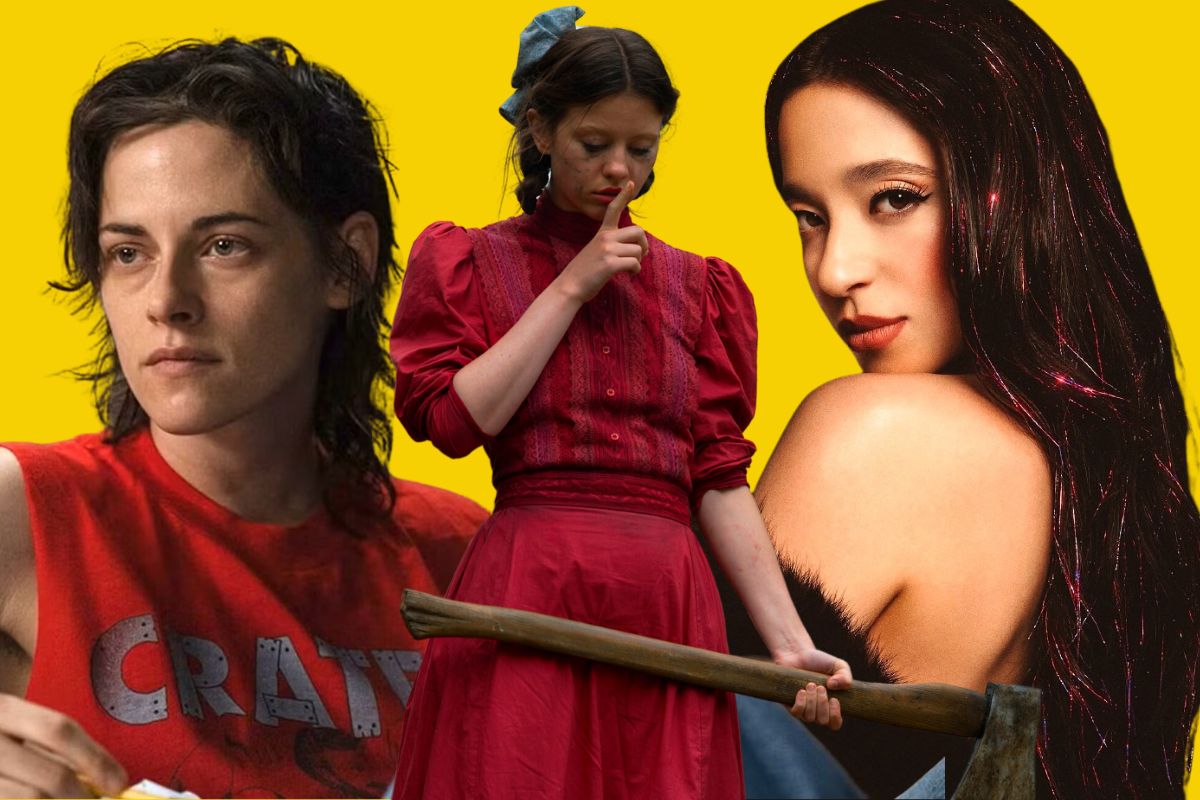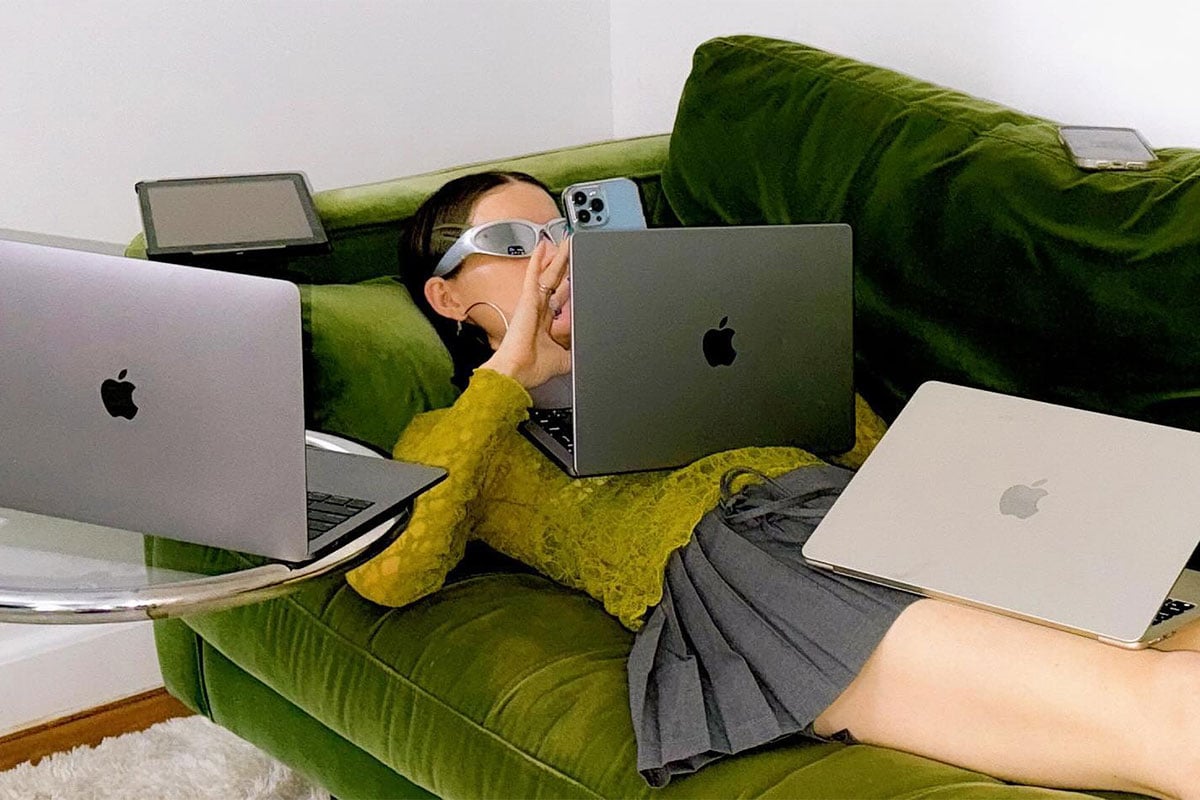
In conversation with Tara Young
Get to know Rachael Gibson, the London-based Hair Historian whose curated Instagram feed (a personal favourite) doubles as a visual art museum combining her three loves; hair, art and history.
Rachael AKA The Hair Historian has spent over a decade delving deep into historical archives to unravel the rich, textured stories behind some of the world’s most iconic hairstyles, products and moments in time, highlighting the connections between hair history, culture and self-expression. Whether it's paintings of Pre-Raphaelite redheads, close-ups of perfectly formed ringlets and hair accessories, grey hair solutions, bear grease or regency hair styling advice, Rachael is across it.
After years of reading Rachael's work and liking all her Instagram posts, I reached out to her in the hope she would have time to answer my most burning questions. And lucky for us, she did! From Redheads, historical hair concerns, trends and political rebellion to The Jetsons and her predictions for the future, this is my chat with The Hair Historian. Enjoy!
Can you tell us a bit about your background and the path that led you to becoming the Hair Historian?
It would be fair to say I fell into it. I studied Fashion Design at university but was always more passionate about the cultural studies side of the course than making clothes. People’s decisions about how they present themselves and the psychology and history behind trends and style tribes fascinate me.
I went on to study Fashion Journalism for my Masters, which built on that idea of storytelling and research. When I graduated, I ended up working on beauty magazines and eventually got a job at Hairdressers Journal, which is a magazine for hair pros here in the UK. It was founded in the 1880s and we had access to all of the amazing archives, which naturally I was obsessed with.
That was 15 years ago and since then I’ve stayed mostly in the hair biz, writing about hair, hairdressers and the industry. Funnily enough, my mum did tell me earlier this year that when I was a baby I was absolutely terrified of bald people, so perhaps it was always meant to be…
Where do you source inspiration?
I spend all of my spare time in galleries and at exhibitions, which never fails to inspire me creatively. Living in London we’re spoilt for choice, and there’s always something going on. On that point, the creative inspiration you see when you step on the tube each morning is also pretty amazing. I’ve been lucky enough to travel the world with work, and I do think London street style remains pretty iconic in terms of the wealth of self-expression.
In terms of other sources, I have never knowingly walked past a bookstore and not gone in, and I’m also a Pinterest fiend. I consistently find it to be the best social media platform for inspiration and getting lost in research. My bonus tip is the Google Arts & Culture App, which gives a daily dose of inspiration. I have the iPhone widget so whenever I pick up my phone, I see something creative which I can read about.
From Renaissance ringlets to the head of Medusa, your Instagram feed is a glorious visual art museum for hair. What’s a hairstyle or period you gravitate towards and why?
I’m a redhead myself, so I have a soft spot for any Pre-Raphaelite redheads. The colour wasn’t any more common than it is now, but its romantic appearance, vibrance on canvas and reputation as being associated with ‘otherness’ made it quite symbolic of this art movement. I’ve never met a Pre Raphaelite, curly, red-haired model I didn’t love in a painting!
Do you have any historical hair icons?
Anyone who is willing to do something weird and go against the grain does it for me, too many people to choose!
I have to ask (assuming you know the answer), why are there so many redheads in historical paintings? Being a redhead myself, this is important information.
I think I answered this above, but one of the reasons is just that it looks great and vibrant on canvas, so people notice your painting in a crowded room. Red hair is also symbolic of many allegorical characters and moments.
It’s associated with witches, fallen women, evil and otherness. Whether it’s Jolene with her flaming locks of auburn hair or Ron Weasley, red always denotes someone slightly different to the mainstream in one way or another, which is why it’s a great choice to get a visual metaphor across in a painting.
We can learn a lot about how hair, fashion and beauty trends are reflected through a moment in time. What are some particular eras and hairstyles that stand out for you and why?
There are too many to mention, but personally, I’m always drawn to hair in times of rebellion, when people – whether en masse or in smaller pockets – start to change their appearance to defy the status quo.
The Black Power movement and the reclamation of the Afro in the 1970s as a rejection of white beauty standards, flappers cutting their hair short in the 1920s as women became more liberated and faced massive shifts in their lifestyles, and any DIY punk cuts and colours from the 70s onwards will always stand out to me as being great examples of how hair is so closely linked to politics and identity.
When it comes to personal identity, hair can be an emotional expression. For example, going through a breakup might mean a drastic haircut, why do you think this is?
Hair is, often, something we have compete control over. When we’re going through a difficult or tumultuous time, it allows us to control the visual narrative that we present to the world. We read a huge amount into people’s hair and the messages it sends, and being able to steer that in a way that you want is very empowering.
"Having lustrous, healthy, youthful-looking hair is deeply ingrained with our views of what’s attractive on a primal level. Further to this, people have always chosen to adorn their hair, through cut, colour and styling".
Do you think people have always had the same hair concerns we do today?
Recipes for haircare formulas date back to ancient times, and most of them focus on hair loss and restoring grey hair. So yes, our haircare concerns are very much relatable. When you look at haircare advertising, and the language used on packaging for the last few centuries since products were more aggressively and purposefully marketed, they’re pretty much always built around the same end goals: more hair, thicker hair, longer hair and less greys.
Having lustrous, healthy, youthful-looking hair is deeply ingrained with our views of what’s attractive on a primal level. Further to this, people have always chosen to adorn their hair, through cut, colour and styling. While that has sometimes been for cultural, religious or symbolic reasons, it’s also often down to the same desires that many of us have: to look different, to look more like someone else, or to represent your creativity.
How did the idea of hair salons as communal spaces come to be?
In ancient times the salon was often considered a place to see and be seen, although that was for men – seeing a woman have her hair done in public was a bit of a no-no until relatively recently. It would have been a place to discuss big ideas, debate and catch up with other men of power.
Although women’s salons weren’t really common until much later, women have always come
together for communal grooming procedures in private spaces, whether that’s braiding hair together, or going through DIY chemical processes with someone to keep you company (and help you out). In more recent history, salons were very much places of connection, particularly for marginalised and diaspora communities.
One of my favourite examples is of the Black salons who served as PO boxes for those involved in the civil rights movement to receive political materials anonymously, and who hosted voter registration drives. It’s amazing what you can achieve when people dismiss your business as somewhere women sit around gossiping!
People were obviously getting their hair done long before then, was it all in-home visits by a hairdresser? Did they care about the latest trends at the time? How we look is so ingrained in our psyche, especially now that it is so public and online, I wonder if it was always like that in some way or another?
Home visits from a hairdresser would have been the norm for many women in high society before the emergence of salons, but more often than not it would be the responsibility of a maid. Hairdressing skills were very much marketed by maids as a desirable trait. A knowledge of modern, fashionable styles would have been important, and the technical ability to create impressive looks would made you eminently hireable.
People have always cared about trends, and hairstyles with ridiculous names are nothing new. These would have been published in women’s magazines and newspapers and were also derided in the press for being silly – really, nothing changes.
The celebrities and formats might have changed, but people have always wanted or felt the need, to look more like someone else or conform to mainstream beauty ideals. As an example, when Elizabeth I was on the throne, red hair and plucked hairlines were fashionable – even amongst men.
I think of that infamous Devil Wears Prada scene where Andy dismisses her involvement in trends with a “scoff” and Miranda goes on to school her about the cerulean sweater – we’re all part of the cycle whether we like it or not. Through your research have you seen specific trends or styles depicted historical artwork or text that have recirculated (like fashion) or any that are still going strong today?
Most hair trends are cyclical, as with fashion. As anyone who studied trends at college knows, they tend to bubble up from street culture and style tribes to become mainstream, or they trickle down from people in prominent positions doing something and everyone else wanting to copy them. Somewhere in the middle, you reach a peak when the trend is over, and then the whole thing starts again.
It’s not really from artwork, but the main hairstyle that sticks out to me as a cyclical trend is the mullet, which is currently ubiquitous here in London. It started as a gender-bending, alternative haircut in the 70s that very much marked you out as an alternative, worn by people like Patti Smith and David Bowie. It eventually became mainstream and associated with a very different culture: macho athletes and sports stars in the 80s and early 90s. It became so ridiculous it then disappeared, and became viewed as something totally hideous and naff.
It then regained its status as an ‘outsider’ cut through the following years thanks to its prevalence in the queer community – nobody else had that cut, so it was a good identifier that you were part of another scene.
It then came back as a high-fashion look favoured by hairdressers and cool kids in the 2010s and now it’s everywhere, with mainstream guys here in London wearing curly permed mullets that resemble early 80s styles.
I always stumble upon odd product concoctions from the past that we wouldn’t dare use today – What are some bizarre or genius techniques you’ve come across?
There are literally too many to document. I’ve written about people using everything from cat blood to urine to flowers and plants and radiator paint to do things to their hair. I think the most interesting point to take away from this is our sheer desire to do things with our hair. People are insanely resourceful and will always, no matter what the situation, find something to use to change their appearance.
I did recently go on a deep dive into bear grease after visiting the Royal Pharmaceutical Society Museum here in London, where they hold lots of vintage product packaging. Bear grease was used to style their hair, and was also believed to help you grow thick, healthy hair and reverse balding. The theory is that bears have thick hair… It was one of the most mainstream beauty products out there, and the museum has loads of novelty bear-shaped bottles from the 18th century. It wasn’t particularly easy to come by though, so enterprising manufacturers just used pork grease, which was presumably pretty hideous to work with.
Do you come across many freaky or sentimental hair stories? I’ve read about lovelocks, and about men during the 19th Century who kept snuff boxes of their mistress’ pubic hair as a keepsake.
I visited a hair exhibition in Paris last year which had the box and stand for the wig which Charles II was rumoured to have commissioned from the pubic hair of his lovers, that was a cool one. I’m also a huge fan of a lovelock, and the same exhibition also included lovelock earrings, made from stands of hair.
I have a good friend who is a modern hairworker, making jewellery in the Victorian style with human hair. I know it takes a bit of getting your head round, but they’re very beautiful. Many people keep a baby’s lock of hair, and the idea of having an amulet created with a loved one’s hair is pretty beautiful to me.
Looking to the future, what do you think people will say about the 2020s? Do any big hair moments or technology stick out for you?
The 2020s for me represents the end of mainstream trends and a mass movement towards doing what you want in terms of creative expression. I feel like we’re less defined by one big trend that shapes a season, and more able to tap into whatever creative expression we feel like trying on that day.
Social media has obviously played a huge part in this, but it does feel like an exciting time for self expression, enhanced through the products and technologies to help us achieve it with less stress and damage than previous generations.
In terms of technology, what’s next for haircare? What else can be done?
I think the most exciting developments for the future have to be around hair colour. We’ve already seen developments in colour that adapts to heat and light from Unseen and Colour Alchemy, but I’m excited to see a future when colour can change really quickly and dramatically, without damage to the hair. I’m not sure how it would happen, but I feel confident it will in my lifetime. I’m ready for a Jetsons style future of sci-fi hair!
What products are on your shower shelf?
Dizziak Shampoo and Conditioner and Aveda nutriplenish™ curl gelee for hair wash day. I’m pretty lazy with my hair the rest of the time, but there is always a texture spray in rotation. I have an entire cupboard of them, from the classic Oribe one to options from Redken, Amika and Bumble and Bumble. I swear they all have small differences which makes me decide which one I fancy that day. When it’s summer or holiday time, I also love a salt spray to bring out my texture and give me a bit of volume. I have a cupboard full of those too, but Bumble’s Surf Infusion is a favourite for a softer hold.
What’s your most frequent online purchase?
Not technically haircare, but I am an accessories fiend. I have a full on filing cabinet in my office for hairslides, scrunchies and headbands, all stashed by type. I am never without something in my hair!
We’ve all got a hair horror story from the past – are there any moments that make you cringe and lol?
I’m a firm believer in no regrets, but I did have a bob when I was about 12 which was entirely not suited to my thick, curly hair. No idea why the hairdresser let me show them a slick, 1920s-style flapper bob and thought it would work, in any way, on my hair without talking me down…
Do you have any hair concerns and how do you deal with them?
Not really! I’m delighted to be in my 40s and entirely confident in my own skin (and hair). I did recently get new bangs which are taking me a bit of time to figure out styling, but I mostly just spray water on them and let them do their thing.
What’s next for the Hair Historian?
A book is the eternal thing I’m asked about… we’re working on it!


